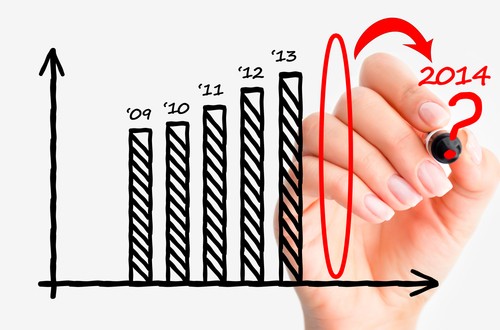Is the Strongest Part of the Housing Recovery Over?

Many of the nation’s major metros reported slowdowns—and even retreats—in home prices last quarter, but those weren’t enough to keep 2013 from being the strongest year for house prices in nearly a decade.
S&P Dow Jones Indices released Tuesday its S&P/Case-Shiller Home Price Indices for December, showing national prices up 11.3 percent as of year-end, a slight pickup over the previous quarter’s annual improvement of 11.2 percent. The national index covers all nine U.S. census divisions.
While prices were strong in Q4 compared to the previous year, they were down relative to Q3, dropping 0.3 percent.
“The S&P/Case-Shiller Home Price Index ended its best year since 2005,” said David M. Blitzer, chairman of the Index Committee at S&P Dow Jones Indices. “However, gains are slowing from month-to-month and the strongest part of the recovery in home values may be over.”
Blitzer also pointed out there are other factors to consider when looking at the big picture.
“Recent economic reports suggest a bleaker picture for housing,” he said, citing weak numbers in existing-home sales and new construction. “Some of the weakness reflects the cold weather in much of the country. However, higher home prices and mortgage rates are taking a toll on affordability.”
For just December, the smaller 10- and 20-city composites were little changed, with only the 20-city index showing a minor decline.
Year-over-year, the 10- and 20-city indices posted gains of 13.6 percent and 13.4 percent, respectively, approximately 30 basis points lower than their November increases.
As of December, average home prices across the United States were back to mid-2004 levels, remaining down about 20 percent from their peaks in summer of 2006.
A few cities stood out in the most recent report. According to Dow Jones Indices, Chicago posted its highest annual return since December 1988, while Dallas posted climbed to another new peak with its largest annual gain since its inception in 2000.
Denver, which set an all-time high as recently as last September, reported a 0.1 percent monthly drop in home prices, bringing it down 0.7 percent from its peak. Phoenix, coming off of more than two years of consecutive monthly gains, posted a 0.3 percent price drop, its largest since March 2011.
Year-over-year, all 20 cities tracked showed positive growth. Las Vegas, Los Angeles, and San Francisco all posted improvements of more than 20 percent, though they also showed lower annual rates compared to November.
At the same time, most of the cities ranked at the bottom in terms of annual growth—including Denver, Washington, D.C., and New York—experienced acceleration in home prices.
